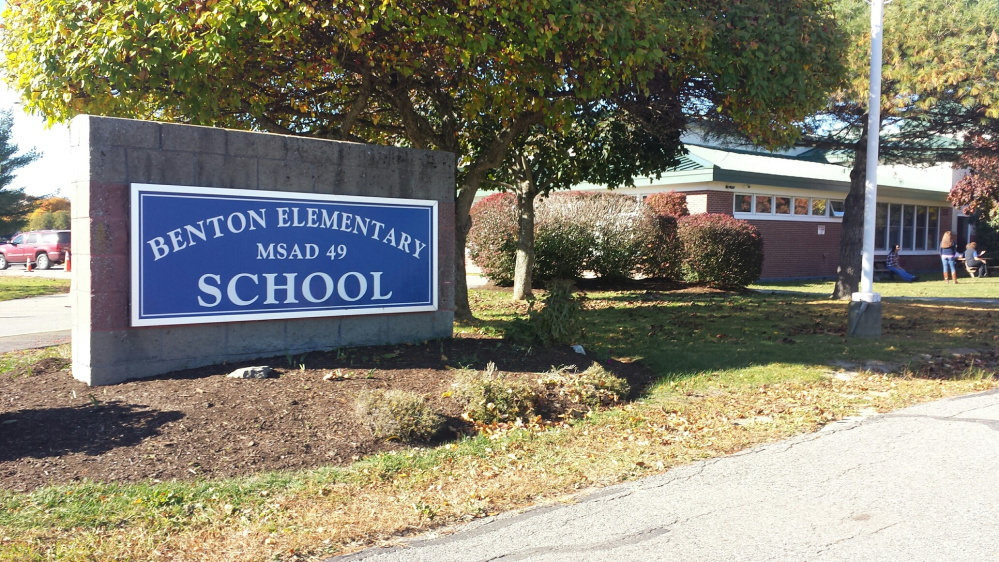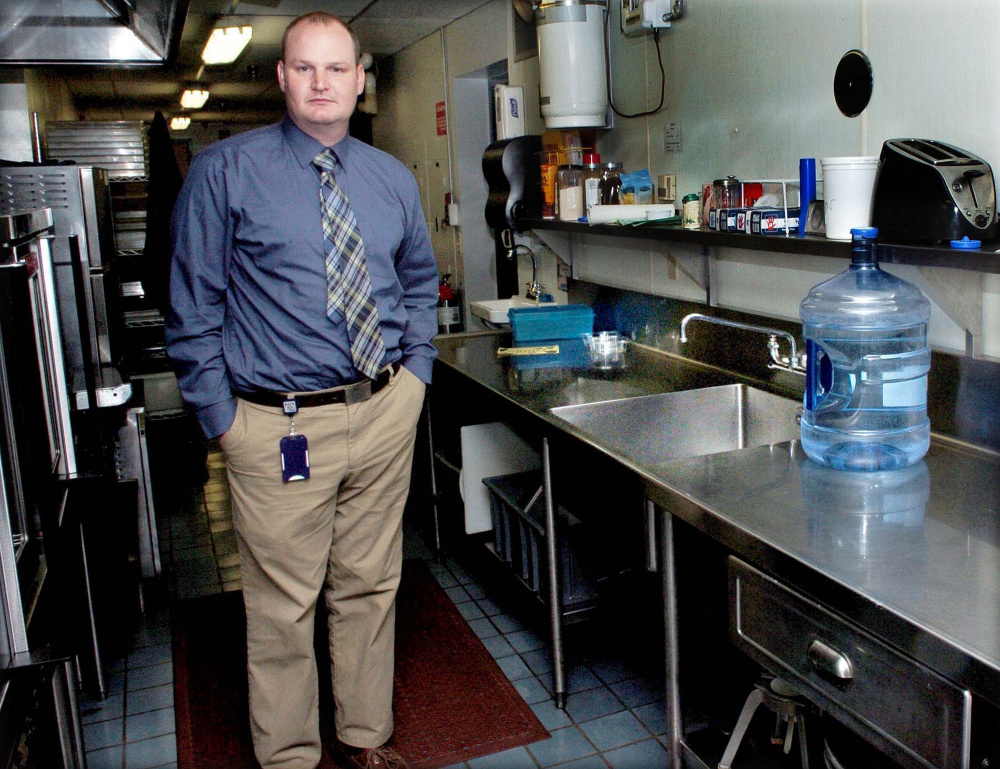BENTON — Results from a second round of testing for lead levels in the water at Benton Elementary School have brought good news but still leave plenty of unanswered questions, and the school continues to have bottled water brought into the building.
The Kennebec Water District sampled the school’s water a second time late last week after an initial round of tests showed high levels of lead in water coming out of three faucets in the school.
When the school was notified Oct. 19 about the results of the initial test, officials immediately instructed students to drink water only from water coolers and provided water bottles. The school shut off all water fountains.
“All of the sites are well below the action level and well below what they were before, which has us a little confused, but it’s good news,” Jeff LaCasse, general manager of the water district, said Tuesday of the second round of testing results.
Those results and an investigation of the school’s piping system show that brass pipes may be origin of the lead levels, he said, but it’s still only a working theory.
The water district tested the school Oct. 14 as a “goodwill gesture” in light of increased national concern over high levels of lead in water in schools. It found high levels of lead at all three sites it tested — 57 parts per billion, 78 ppb and 670 ppb. Action must be taken when more than 10 percent of samples show a water supply’s lead level is above 15 ppb for residential areas and 20 ppb for schools, according to the Environmental Protection Agency.
Young children are the most susceptible to lead, which can cause both mental and physical developmental delays.
Despite the good results from the second round of sampling, the school still is providing water bottles and telling students not to drink school water as a precaution.
“That will continue until we have consistent test results and understand the discrepancies of the tests so far,” school Superintendent Dean Baker said.
LaCasse said that if the brass piping is the problem, the school has two options for solutions. It could replace the piping, which is only in part of the school, or it could routinely “flush” the faucets each day.
School employees would have to let the faucets run in the morning before students arrive, which would clear out water that had been sitting in the pipes, potentially being contaminated. After they’re flushed, fixtures should be drawing water closer to the main pipe, owned by the water district and treated for lead.
LaCasse said they even tell homeowners that they shouldn’t drink water “that’s been sitting idly in piping,” and that this is an “easy, safe cure” to the problem.
Principal Brian Wedge said the school currently has no regimen for flushing all of the building’s fixtures.
Baker said the district will do “whatever the water professionals ask us to do” and that if the pipes need to be replaced, they will be.
The water district took three samples at each of the original three sites it tested. One sample was taken at the first draw, one was taken 15 seconds after turning on the faucet and one was taken one minute after turning on the faucet, which would be water from the district’s main pipe.
At the sink near the cafeteria, which had the highest level, 670 ppb, the first draw showed 2.9 ppb, the second 0.72 ppb and the last 3.0 ppb.
“Typically you’d expect it to go down,” LaCasse said. This sink is the closest to the school’s older piping, which is brass and could contain higher lead levels, but LaCasse said more investigation is needed before they can say why the draw after one minute had a higher lead level.
At the sink in the first-floor classroom, which had 57 ppb in the first testing, the first draw showed 3.9 ppb, the second 0.81 ppb and the last 0.58 ppb.
At the sink in the second-floor classroom, which had 78 ppb in the first testing, the first draw showed 2.2 ppb, and the second and third had less than 0.5 ppb, which is below the detectable level of lead.
The plumbing going into the area where the sites were tested is in the old part of the school building, which was built in 1957. The piping is brass, which tends to have a higher lead content, LaCasse said.
The water district plans to continue sampling water in the school to send out for testing at Maine Health and Environmental Testing Lab, in part because this round of testing showed such different results from the last. LaCasse said the district also is hoping to conclude whether the brass piping is causing the problem.
“That will give us a better idea of how to attack this moving forward,” he said. Right now, there is no clear answer as to why the first results showed such high levels of lead.
Baker said he requested that the laboratory results from the first samples be re-examined.
Send questions/comments to the editors.





Success. Please wait for the page to reload. If the page does not reload within 5 seconds, please refresh the page.
Enter your email and password to access comments.
Hi, to comment on stories you must . This profile is in addition to your subscription and website login.
Already have a commenting profile? .
Invalid username/password.
Please check your email to confirm and complete your registration.
Only subscribers are eligible to post comments. Please subscribe or login first for digital access. Here’s why.
Use the form below to reset your password. When you've submitted your account email, we will send an email with a reset code.